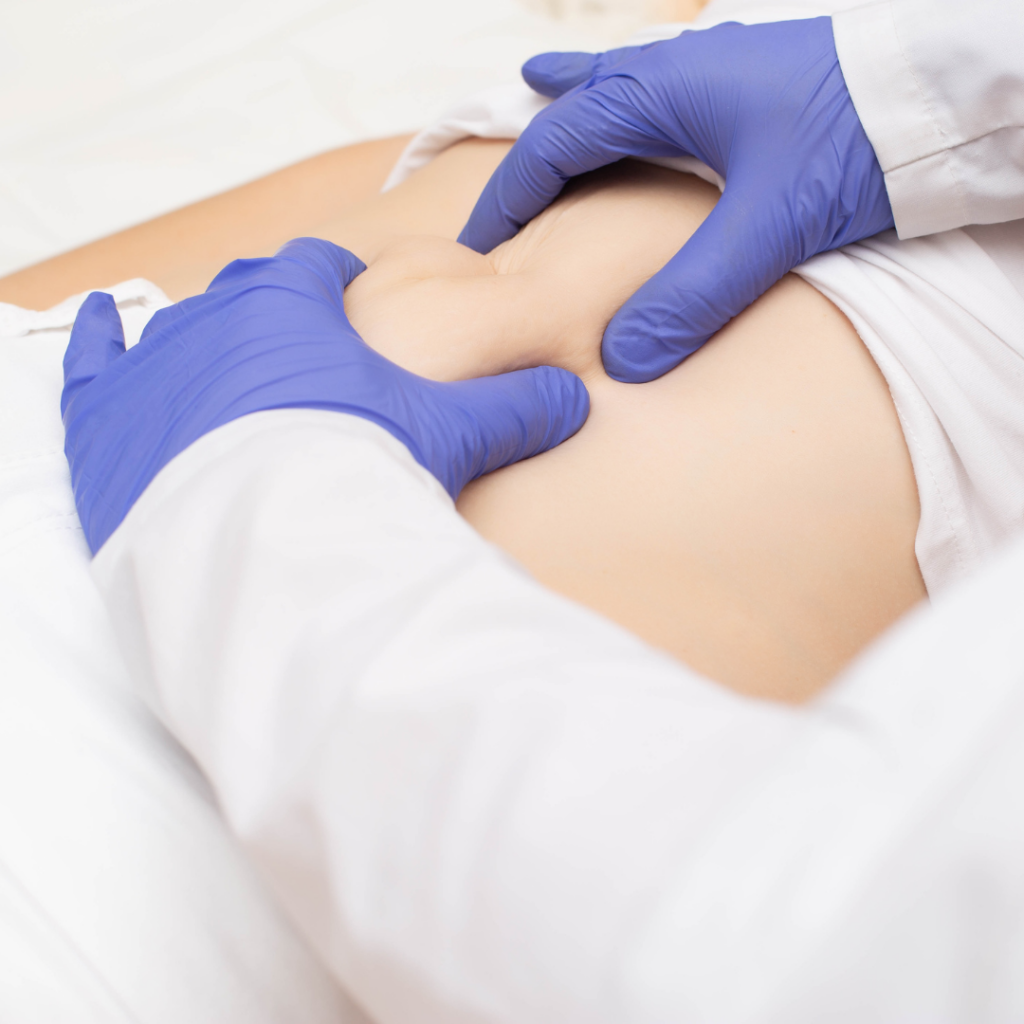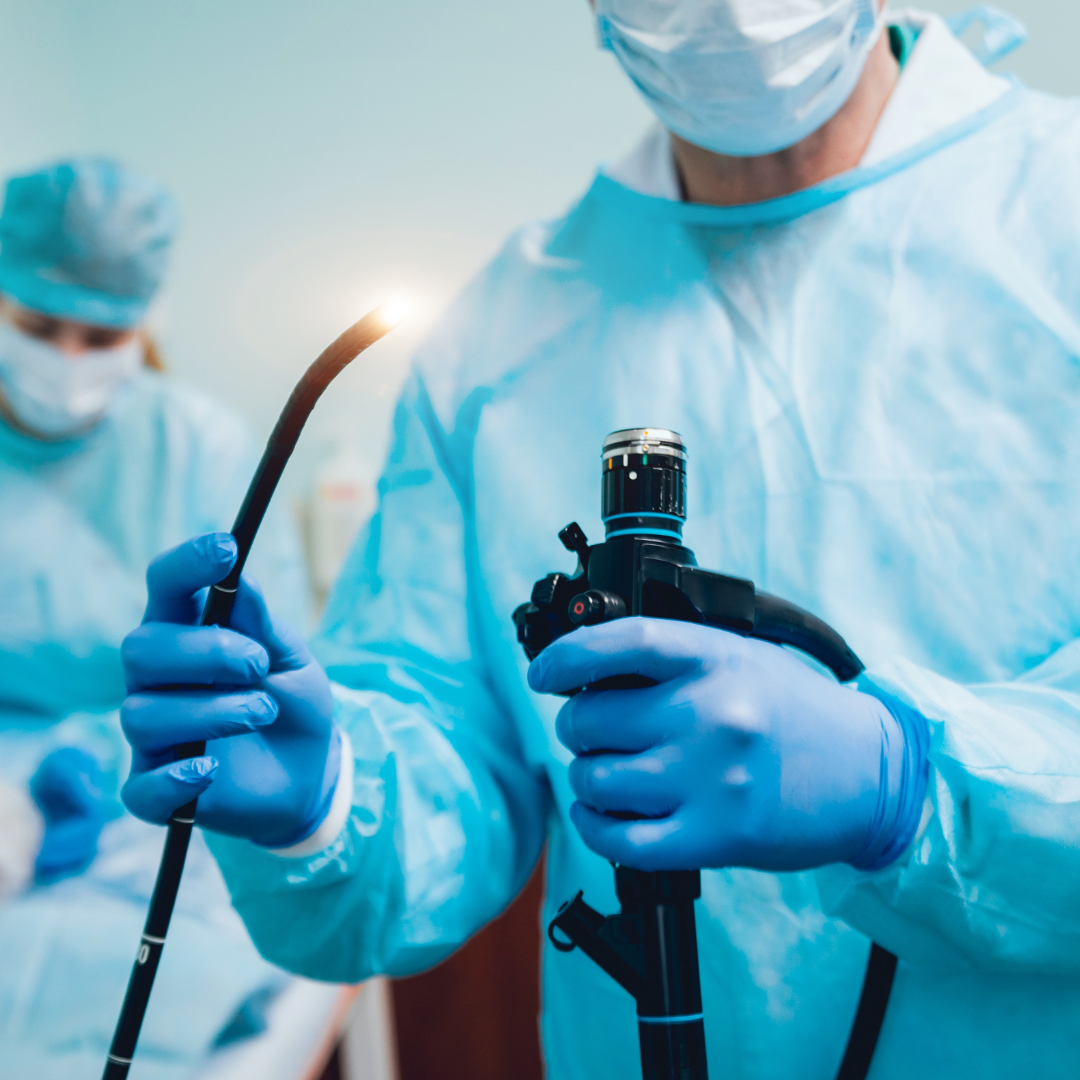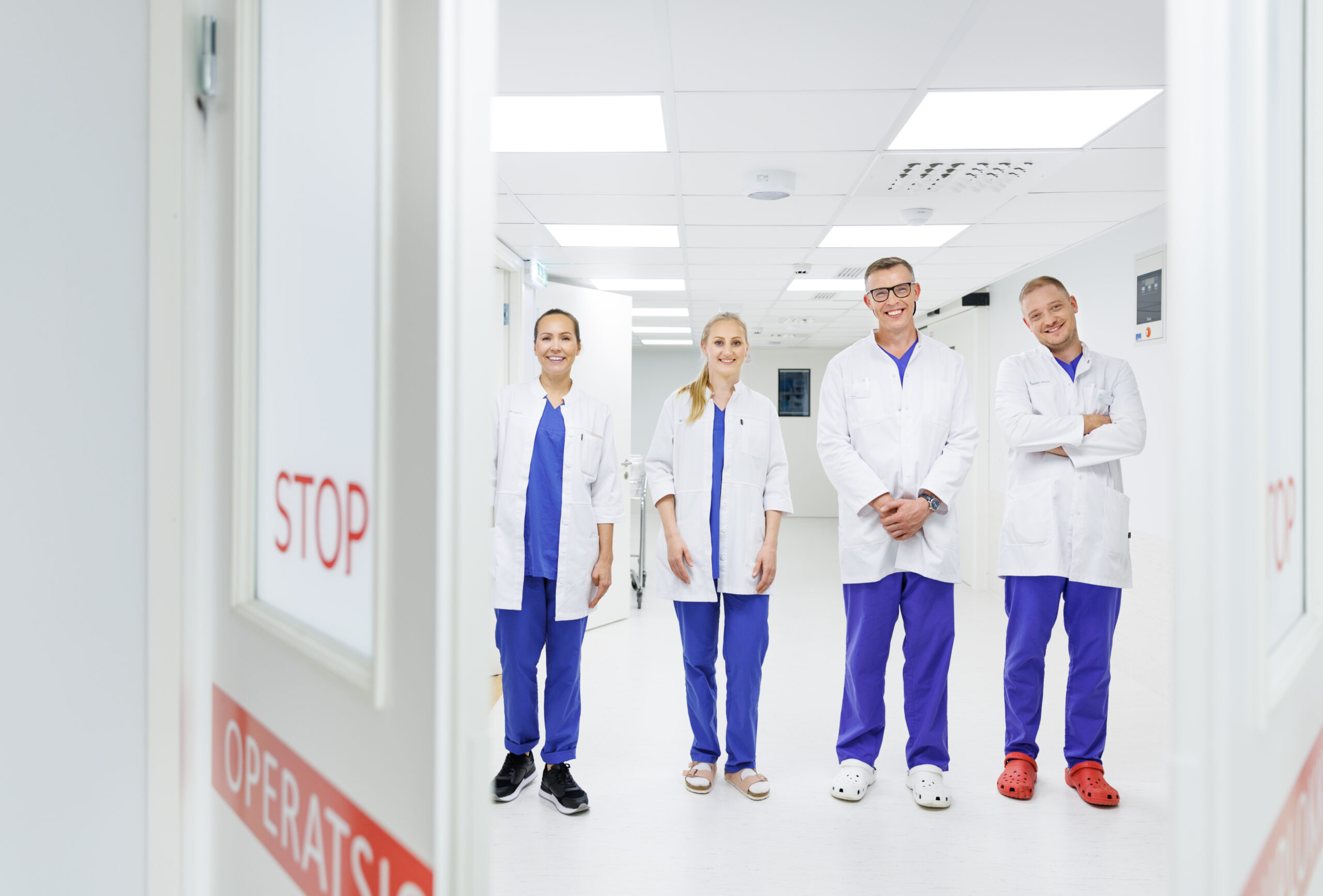Hernia is the most common reason for referral to a general surgeon. In Estonia, more than 3,000 planned hernia surgeries are performed every year, and in addition 320-330 emergency surgeries due to hernia laceration.
Almost three-quarters of hernias are inguinal hernias, of which 90% occur in men. The incidence of inguinal hernia increases with age, and nearly 15% of patients have bilateral inguinal hernias. Other hernias include scar, umbilical, femoral, and rare hernias. The hernia does not go away by itself and its treatment is always surgical.
Why does a hernia occur?
A hernia has several causes. Prolapse occurs primarily in weak areas of the abdominal wall such as the inguinal canal, navel, midline of the abdomen and scars from previous surgical incisions. The cause of hernias in the umbilical and inguinal region in early childhood is a non-closed umbilical cord canal or incompletely closed inguinal canal during the development of the fetus and child. In adults, for example, pregnancy, trauma, previous operations or pathological changes in the connective tissue contribute to the formation of a hernia. Heavy physical work, chronic cough, constipation and weight gain are also risk factors. Even knowing the possible causes, it is still difficult to prevent a hernia.
Complaints caused by a hernia include discomfort, pain and the feeling of a moving subcutaneous formation under the skin. Prolapse and pain may increase with standing, physical exertion, coughing, sneezing, and distending the abdomen. A hernia is best seen and felt in an upright position. In the supine position, it is often possible to push the prolapsed abdominal cavity organ or part of it back into the abdominal cavity. In the case of a ruptured hernia, this does not work, and in such a case, emergency surgery may be necessary. Laceration means a situation in which the hernial sac with its contents gets stuck in the gate, becomes swollen, and within a few hours, the organs and tissues in the hernial sac may suffer from circulatory disorders and shrinking. The main symptom of perforation is severe pain in the area of the hernia, in case of intestinal perforation, vomiting is added. If a ruptured hernia is suspected, you should immediately contact the EMO, emergency surgical treatment may be necessary.
Do not postpone hernia surgery
The diagnosis of a hernia is confirmed by the surgeon based on an examination or ultrasound examination. Hernias that cause complaints (pain, laceration) require surgical treatment. Adult hernias never heal on their own. In the case of uncomplained hernias, we recommend surgical treatment for patients in good general condition and physically active to avoid tearing as a result of physical exertion. Classical hernia surgery is performed using an open method through a long skin incision. The expelled hernia sac with its contents is pushed back into the abdominal cavity and the defect in the abdominal wall is closed with sutures or prosthetic mesh to prevent the formation of a new hernia. Prosthetic mesh enables faster healing and better long-term treatment results.
Amsel Clinic recommends and always uses the laparoscopic or minimally invasive surgical method whenever possible. Its main advantage compared to open surgery is less pain in the postoperative period and faster recovery. Wounds are closed with self-dissolving intradermal sutures to ensure the best cosmetic result. After inguinal and umbilical hernia surgery, patients recover quickly and go home a few hours after surgery. After the surgical treatment of large hernias, you go home the next day or the day after. Recovery from work and exercise after hernia surgery depends on the extent of the operation, but generally does not take more than 1-3 weeks.
If a hernia occurs, you should not wait, if you have complaints, see a doctor.




